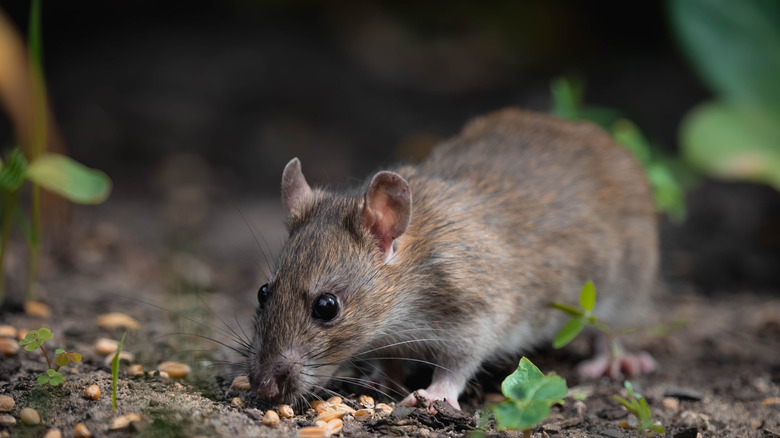The Problem With Growing Bamboo That Most Gardeners Aren't Aware Of
Bamboo has aesthetic appeal for many people. It's technically a type of giant grass, a relationship that's evident in the distinctive tall, straight shoots it is so beloved for. However, despite its aesthetic benefits, there are a lot of downsides to this plant in home gardens. Bamboo, whether Bambuseae, Arundinarieae, or Olyreae species, typically grows and spreads quickly. Left unchecked, the plant can take over a garden or backyard — it's even been known to grow into the walls of homes. Alongside this potential risk that comes with planting bamboo in your yard, the plant has another serious yet lesser-known problem worth considering. Growing bamboo can attract rats to your yard.
No one likes the thought of rats living on their property, but they're also a fact of life people need to occasionally deal with. Rats are more common in dense urban areas because there is an abundance of food and shelter and fewer animals to compete with. However, these pesky rodents can be found anywhere, including suburban and rural areas. Rats may also carry and transmit diseases that pose a danger to human health. Needless to say, you don't want rats taking up residence in your home or yard. Making your outdoor spaces less enticing for rats includes managing or removing certain plants that could be inadvertently attracting them. Since bamboo rarely bears pest-attracting fruit, people might mistakenly consider it unattractive to rats. That couldn't be further from the truth.
Why bamboo attracts rats, and what you can do about it
Rats are attracted to bamboo for two main reasons: food and shelter. Not only do these quick-growing plants provide nesting and hiding spots, but some rats eat bamboo seeds — though flowering and fruiting is a rare event for most bamboo species. What's more, rats' teeth are strong enough to gnaw on hard materials. In theory, if they were really hungry, this could include bamboo shoots and stems. Err on the side of caution and plant clumping bamboo in pots to better contain their growth and restrict access. (Running-type bamboo species are the one type of bamboo you should never plant for privacy because of aggressive spreading.) However, growing bamboo in containers isn't a foolproof rat deterrent, either. You'll need to thin the stands at least once a year. Pruning doesn't just help the plant look its best; it also reduces overgrowth. This makes your stand less attractive to shelter-seeking rats.
Managing the growth of ornamental bamboo will only go so far in preventing rats in the garden. Ideally, you should eliminate other sources of food, including bird seed, pet food, fruit trees, and unsealed garbage cans. Regularly check potential sites of shelter, like dense shrubs, for signs of rat occupation: droppings, gnaw marks, or burrows. Keep these plants well-maintained, or consider replacing them with some of the beautiful plants that keep rats out of the garden, like chrysanthemum, bergamot, eucalyptus, or odorous boxwoods.

